Your first step toward a UDL-designed classroom: Change how you think about barriers (Guest post)
July 28, 2015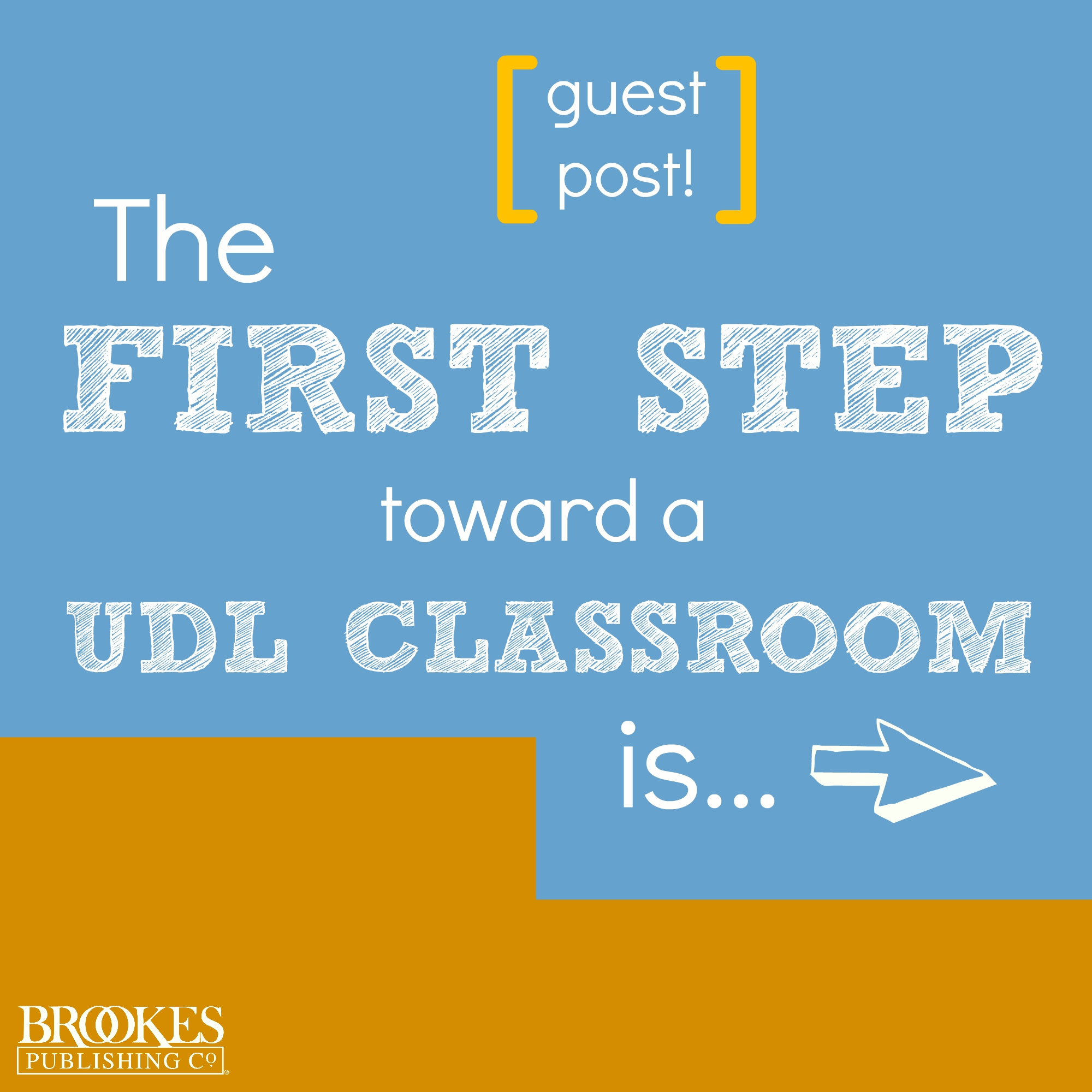
Happy Tuesday, #TeamInclusion! I have a guest post today that co-teachers and UDL advocates will want to read and share. It’s by Dr. Deborah Taub, a UDL/inclusive ed expert and the Director of Research and Programs at Keystone Assessment. Through some short but powerful vignettes, she shows us what’s possible when co-teachers embrace UDL principles while planning instruction for students with special needs.
After you read this, tell us your experience: Does instructional planning in your school sound more like the first or second example? What are your barriers, if any, to adopting the planning approach Mrs. Summers and Mr. Harris took? What resources can we develop to help you? Read on, and then share your thoughts in the comments below!
***
There are often two questions about Universal Design for Learning (UDL) that I hear when training:
- Why would I do this? It is no different from differentiated instruction, and
- How in the world would I do this? It is huge!
Two quick vignettes of teachers planning for instruction illustrate the answer to both questions.
Ms. Jacobs and Mr. Snyder are planning instruction for Dawn, a student with complex instructional needs who is included in Ms. Jacobs’ English class.
Ms. Jacobs: We are reading The Giver for the next couple of weeks. The students will be creating a timeline of a historical event and examining how it connects to their lives as a part of the social studies curriculum.
Mr. Snyder: Dawn can’t read, so I don’t think The Giver is going to be possible for her. And the subject matter doesn’t really connect to her daily life so maybe I’ll give her an adapted copy of Wilfred Gordon McDonald Partridge instead. It also deals with the importance of memories and forgetting and it is written at a second grade reading level so it should be easier to understand than The Giver.
Ms. Jacobs: Oh, that is a great idea. And maybe her timeline could be sequencing from her daily schedule instead of from history?
Now compare these teachers to Mrs. Summers and Mr. Harris, who are also planning for a student with complex instructional needs included in Mrs. Summers’ English class.
Mrs. Summers: We are working on the themes and ideas in The Giver. The students will be creating a timeline of a historical event and examining how it connects to their lives as a part of the social studies curriculum.
Mr. Harris: I love that book–but it can be a bit of a barrier for some of our students unless we pair it with some accessibility supports. We can easily get some adapted versions of The Giver and maybe offer students the opportunity to partner read or use their online text readers.
Mrs. Summers: Yes, that makes sense. We may want to highlight key words or pictures to summarize the main points for some of our students who will still need additional help. And while we are at it, let’s think about how to make it a bit more engaging for some of our students…maybe we can start with timelines related to their own lives and then move from there to historical events that shaped their world instead of from a historical event to themselves. It can go both ways.
Mr. Harris: Plus we could use some online timeline creation tools, pictures, or text-based timelines to provide students with lots of ways to engage with the timeline and get interested in the task.
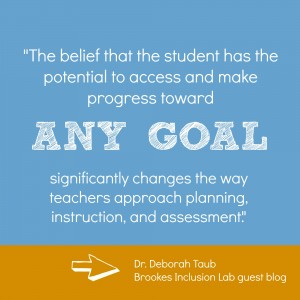 The difference between these two conversations is subtle, but it illustrates one of the key ways differentiated instruction and UDL differ–as well as one of the biggest leaps teachers need to make if they are going to move to UDL-designed curriculum, instruction, and assessment. The biggest difference (and the most vital change teachers need to make to move to UDL-designed curriculum, instruction, materials, and assessment) is moving from the idea that the student is what creates barriers to learning to the idea that the curriculum, instruction, materials, and assessment create the barriers. And, while the conversations above may seem only minutely different, the belief that the student has the potential to access and make progress toward any goal significantly changes the way teachers approach planning, instruction, and assessment.
The difference between these two conversations is subtle, but it illustrates one of the key ways differentiated instruction and UDL differ–as well as one of the biggest leaps teachers need to make if they are going to move to UDL-designed curriculum, instruction, and assessment. The biggest difference (and the most vital change teachers need to make to move to UDL-designed curriculum, instruction, materials, and assessment) is moving from the idea that the student is what creates barriers to learning to the idea that the curriculum, instruction, materials, and assessment create the barriers. And, while the conversations above may seem only minutely different, the belief that the student has the potential to access and make progress toward any goal significantly changes the way teachers approach planning, instruction, and assessment.
Consider the classic study by Rosenthal and Jacobsen (1968) that examined how student performance and teacher expectations were tied together. They found that “when we expect certain behaviors of others, we are likely to act in ways that make the expected behavior more likely to occur” (Rosenthal and Babad, 1985). Our instructional decisions are based on our expectations, even if we are not necessarily consciously aware of them.
When we work from the premise that the barrier is within the student, then our job as educators is to fix the student so he can access instruction and materials. This belief sets up limits for all the things a school system can’t change about a student: missing limbs, intellectual disabilities, an impoverished home, language and cultural differences, etc. When we work from the premise that barriers are within the instruction and materials, then our job as educators is to change instruction and materials to remove and reduce those barriers. We, as educators and school systems have control over those things.
This doesn’t mean it isn’t difficult. Looking at creating a UDL classroom may seem absolutely overwhelming. Consider the CAST website for their curriculum self-check: it is HUGE. There are so many things to think about. And then, on top of that, for students with complex learning needs you are still probably going to need to add some individualized supports on top of the universally designed curriculum, like Mrs. Summers and Mr. Harris did when they added summarized text or pictures to represent key concepts and ideas from the full text. Conceptualizing the barrier as being within the curriculum, instruction and materials rather than the student may seem overwhelming for what initially seems like a tiny difference in how these two sets of teachers plan and teach. In my experience though, it is that single key difference that helps create a UDL classroom. It is that single key difference that improves students’ opportunities to learn and sets up systems that improve student performance. In addition, it is that key difference that sets the stage for inclusive practices. So, if you want to build an inclusive classroom, the biggest step you can take is to change how you think about barriers.
Want to hear more from Deborah Taub? Be sure to check out this podcast she did on alternate assessment over at Think Inclusive, and this post on leaving behind the notion of inclusion as a place.
More on UDL: “UDL Myths vs. Facts”
More on presuming the competence of all learners: “Presuming Competence: What It Is, What It Looks Like”
About Our Guest
Deborah Taub is Director of Research and Programs at Keystone Assessment, where she provides research and professional development assistance for states, territories, and other entities working to develop and sustain best practice. She has assisted states in building and evaluating systemic programs, especially around issues of inclusive practice for students with complex instructional needs, such as those with low incidence disabilities or who are dually identified as having a disability and ELL. Dr. Taub has designed, implemented, and evaluated alternate assessments for students with significant cognitive disabilities, developed UDL and standards-based curricula and instruction, and conducted validity and alignment evaluations. She’s an advisory member of National Center for Universal Design for Learning’s UDL Taskforce, and a member of the TASH Inclusive Education Committee and the Council for Exceptional Children’s CCSS Advisory Group.

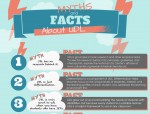
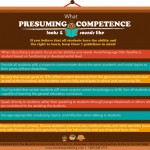
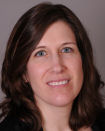



Write a Comment
Your email address will not be published. Required fields are marked *
Post a Comment